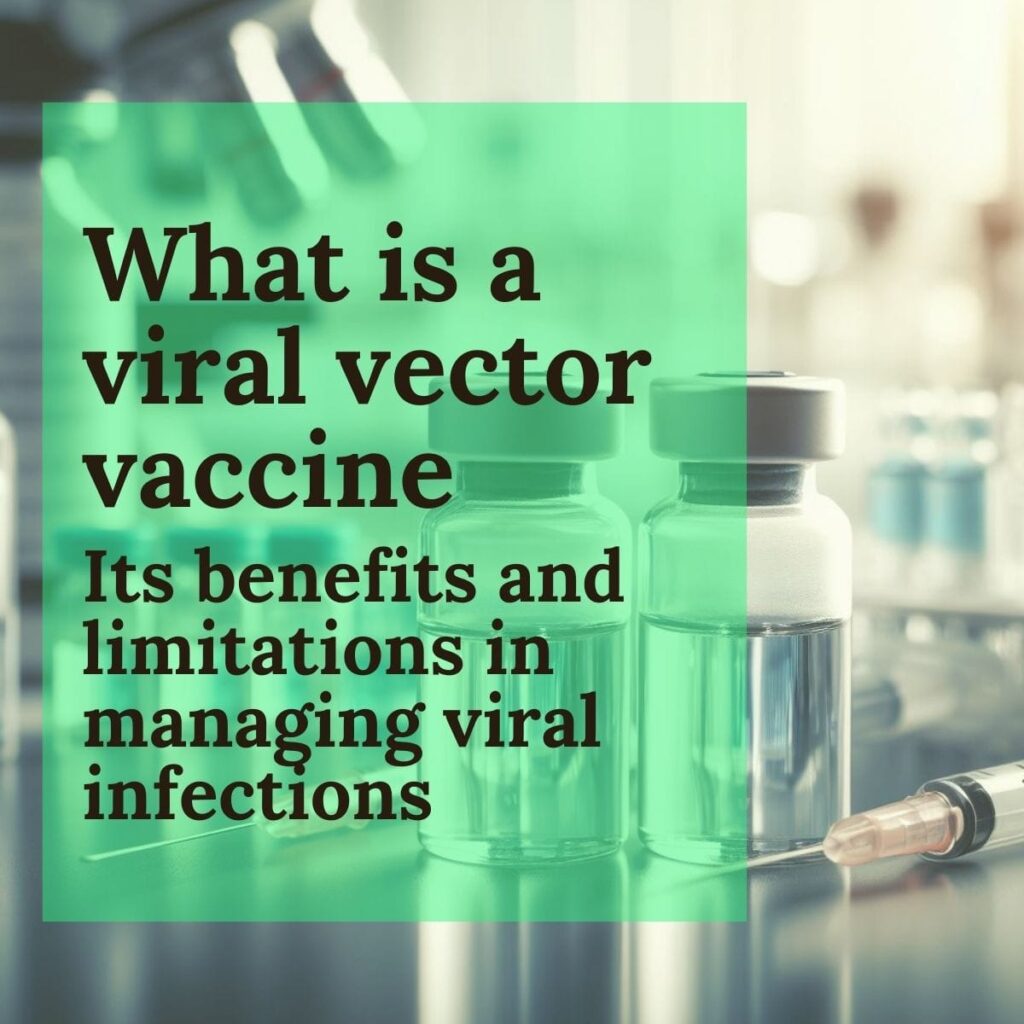WHAT IS A VIRAL VECTOR VACCINE……?

Viral vector vaccines are a type of vaccine that utilises a harmless living virus, called a
vector, carrying specific instructions to produce a part of the target pathogen, typically a viral
protein. Once inside our cells, these instructions prompt the production of the protein,
triggering an immune response.
How Do Viral Vector Vaccines Work?
Viral vector vaccines work by using a harmless virus as a delivery system to prompt an
immune response in the body. This delivery virus, known as the vector, is genetically
modified to carry a specific piece of the target pathogen, often a viral protein. Once
administered, the viral vector enters our cells and releases the genetic material, instructing
the cells to produce the harmless piece of the target pathogen. This newly produced protein
is then presented to the immune system, triggering a robust response. Importantly, the
immune system “learns” to recognize and remember this specific protein, enabling a swift
and effective defence if the actual pathogen, such as a virus or bacterium, enters the body.
This approach harnesses the natural mechanisms of the immune system, offering a powerful
and adaptable strategy for vaccination against a variety of infectious diseases.
Advantages of Viral Vector Vaccines
- Versatility: Viral vectors can be engineered to carry genetic material from various
pathogens, making them versatile tools in vaccine development. - Strong Immune Response: These vaccines often elicit a robust immune response,
including the production of antibodies and activation of T cells. - Single Dose Potential: Some viral vector vaccines, like the Johnson & Johnson
COVID-19 vaccine, offer the advantage of a single-dose regimen, simplifying vaccination
efforts.
Limitations of viral vector vaccines
- Immune Response Interference:
Individuals with pre-existing immunity to the viral vector could potentially reduce the
vaccine’s effectiveness, as the immune system might neutralise the vector before it delivers
the desired genetic material. - Complex Production: Developing and manufacturing viral vector vaccines can be more complex and time-consuming compared to some other vaccine types.
Viral vector vaccines in COVID-19
One of the most prominent examples of viral vector vaccines is the COVID-19 vaccines
developed by AstraZeneca and Johnson & Johnson. These vaccines use a weakened
version of a common cold virus (the adenovirus) as the vector to deliver the genetic material
of the SARS-CoV-2 virus. By doing so, they stimulate an immune response that prepares the
body to fight off the real virus if exposed.
Examples
Here are some notable examples of viral vector vaccines have:
● AstraZeneca/Oxford (Vaxzevria)
● Johnson & Johnson’s Janssen (Janssen COVID-19 Vaccine)
● Sputnik V (Gam-COVID-Vac)
● Ebola Vaccine: Ervebo
● Malaria Vaccine: RTS,S/AS01 (Mosquirix):
In conclusion, viral vector vaccines represent a cutting-edge approach in the world of
immunisation. By utilising the strengths of viruses for good, these vaccines offer a potent
and adaptable strategy to protect us from a range of infectious diseases.




